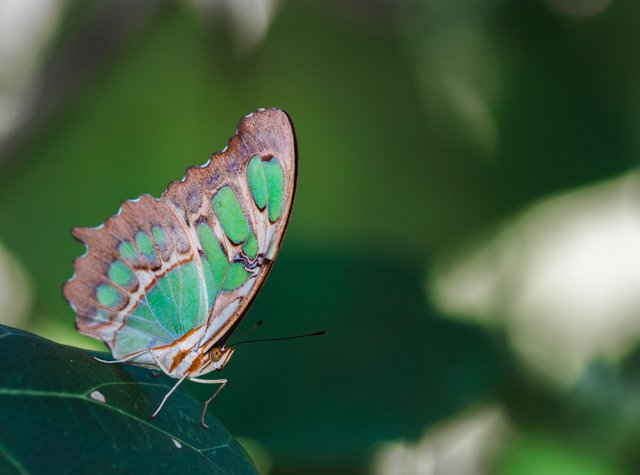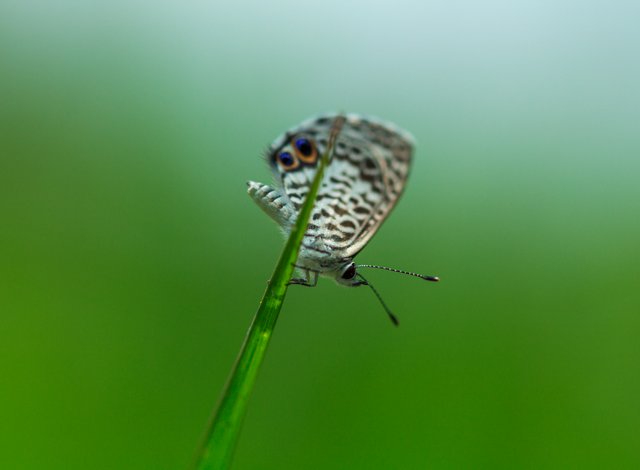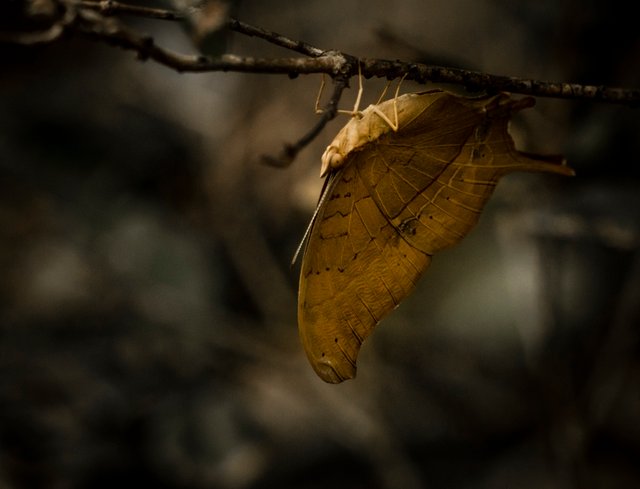I was attracted to wildlife since my childhood, so immediately after buying my first camera I went into the wild. Although later I discovered other dimensions of photography that fully caught my attention, from time to time, I still take nature photos.
I want to show three beautiful Cuban butterflies that I managed to capture on the sensor of my DSLR but there are still many more that I would like to photograph.

"Winter Malachite. Its green color tends to blue while in its summer counterpart it tends to yellow." Canon EOS Rebel T5i with EF 100mm f/2.8 Macro USM; 1/160 sec at f/4, ISO 200 (photo by: author)
This Siproeta stelenes insularis or Malachite butterfly was resting on the shade of a majagua tree (Hibiscus elatus) in the National Botanical Garden of Cuba. Malachites can be found in groves and shady places, although they visit flowers too. They are also very fond of sucking the juices of fermented fruits.
The summer specimens are somewhat smaller than their winter complements. These subspecies are exclusively found in Cuba and Grand Cayman.

"Cassius Blue has black ocelli with a metallic blue hue on the back of its wings." Canon EOS Rebel T5i with EF 100mm f/2.8 Macro USM; 1/500 sec at f/3.5, ISO 100 (photo by: author)
One day in the same garden I got into a grassland that covered me almost completely, this is how I achieved the green gradient on this picture of Leptotes Casius theonus or Cassius Blue which is an abundant subspecies throughout the island.
It has agricultural importance since its larvae are borers in almost all beans, although they can also be found in flowers. Cassius Blue inhabits southern United States down to Argentina.
 "A female Antillean Daggerwing." Canon EOS 80D with EF 100mm f/2.8 Macro USM; 1/160 sec at f/3.5, ISO 800 (photo by: author)
"A female Antillean Daggerwing." Canon EOS 80D with EF 100mm f/2.8 Macro USM; 1/160 sec at f/3.5, ISO 800 (photo by: author)42 kilometers east of Havana, Cuba is Boca de Jaruco where the Jaruco River empties. This area is very rich in fauna thanks to the distance from the city.
I was bordering the mangrove-covered river when I came across this Marpesia eleuchea eleuchea, known commonly as Antillean Daggerwing, which is found in the West Indies and sometimes in Florida keys. This is an endemic Cuban subspecies. It is frequently found on the edge of forests, perched on flowers at a certain height.
This is only a small subset of Cuban Lepidoptera, I hope to travel to the eastern side of the island where fauna is richer, and butterflies more abundant.
Your butterflies have beautiful colors. Our northern butterflies look more modest))
Downvoting a post can decrease pending rewards and make it less visible. Common reasons:
Submit
And I haven't travel yet to the eastern side of the island where, according to specialists, butterflies are more astonishing.
Downvoting a post can decrease pending rewards and make it less visible. Common reasons:
Submit
Show us these butterflies :-)
Downvoting a post can decrease pending rewards and make it less visible. Common reasons:
Submit
Your post is manually rewarded by the
World of Xpilar Community Curation Trail
Join the World of Xpilar Curation Trail
Downvoting a post can decrease pending rewards and make it less visible. Common reasons:
Submit